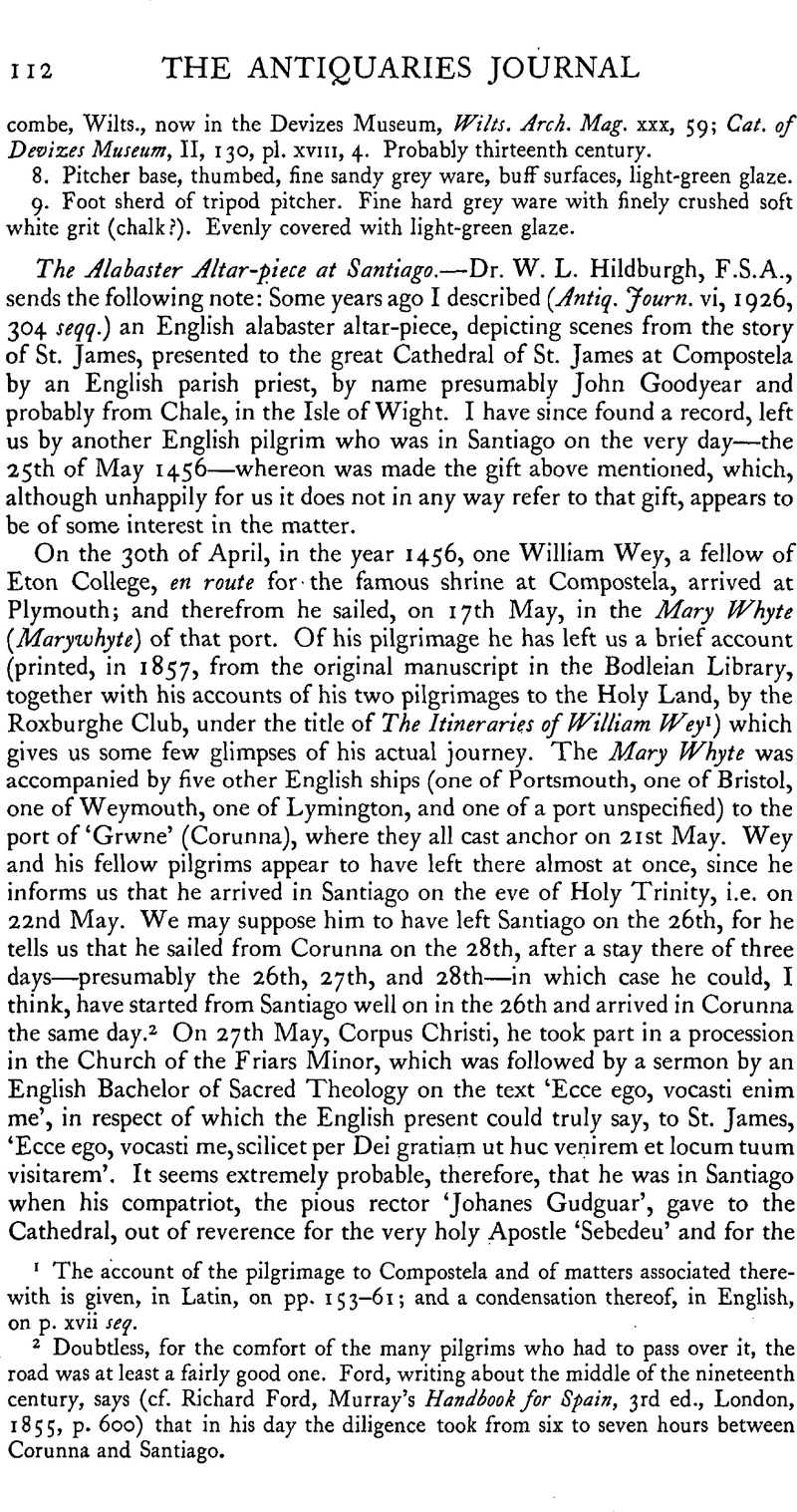No CrossRef data available.
Article contents
The Alabaster Altar-piece at Santiago
Published online by Cambridge University Press: 08 January 2012
Abstract

- Type
- Notes
- Information
- Copyright
- Copyright © The Society of Antiquaries of London 1940
References
page 112 note 2 The account of the pilgrimage to Compostela and of matters associated therewith is given, in Latin, on pp. 153–61; and a condensation thereof, in English, on p. xvii seq.
page 112 note 2 Doubtless, for the comfort of the many pilgrims who had to pass over it, the road was at least a fairly good one. Ford, writing about the middle of the nineteenth century, says (cf. Ford, Richard, Murray's Handbook for Spain, 3rd ed., London, 1855, p. 600)Google Scholar that in his day the diligence took from six to seven hours between Corunna and Santiago.
page 113 note 1 I suggest, as a possible reason for such distinction—though one for which I have no authorization whatsoever save the coincidence in dates–that it was in some way associated with special ceremonies (of which, however, I have not found any mention in the records I have consulted) at Santiago on 26th May, the day on which the Roman Church commemorates St. Augustine of Canterbury, one of the two (St. Gregory the Great was the other) ‘Apostles of the English’.
page 113 note 2 Of whom four were named, respectively, Austile, Gale, Lile, and Fulford; cf. p. 154.


